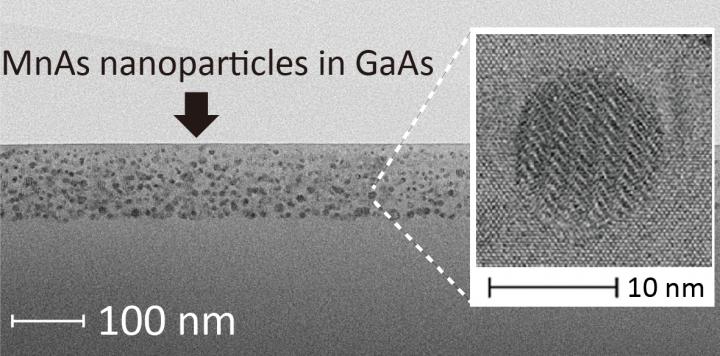Nanoparticles in GaAs: the way forward for spintronics?

Japanese team demonstrates system that could lead to THz speed computation
For the first time researchers have demonstrated a new way to perform functions essential to future computation three orders of magnitude faster than current commercial devices.
The team lead by Shinobu Ohya, created a nanoscale spintronic semiconductor device that can partially switch between specific magnetic states trillions of times a second (terahertz - THz).
"I hope our research leads to spintronic-based logic and memory devices," said Ohya. "Within decades people should see spintronic smartphones and data centers. We would realise incredible performance gains in areas such as artificial intelligence and beyond."
Spintronics exploits an intrinsic property of electrons called spin - responsible for magnetic behaviour - to perform functions. In spintronic devices, discrete spin magnetisation states represent binary digits.
One way researchers create this property is to irradiate a special magnetic material with short but high-frequency pulses of terahertz radiation, similar to that of airport body scanners. The radiation flips electron spins in this material - ferromagnetic manganese arsenide (MnAs) - and thus its magnetisation, in under a picosecond, three orders of magnitude quicker than transistors switch in microchips. Other researchers have attempted this before but the magnetic change in response to the pulses was only 1 percent, too small to be of practical use.
Now, however, Ohya and his team successfully demonstrated a larger magnitude change in magnetisation of MnAs nanoparticles subjected to terahertz pulses.The MnAs nanoparticles were embedded in a GaAs host matrix.
This greater response of 20 percent means it could be more useful in research and hints at possible future applications. Their trick was to take advantage of the electric component of the terahertz electromagnetic radiation rather than the magnetic component.
"Until now researchers in this area used ferromagnetic metal films to study terahertz modulation of magnetisation, but these impeded the radiation's energy," said Ohya. "Instead we embedded our ferromagnetic nanoparticles in a semiconductor film 100 nanometers thick. This hinders the radiation far less so the terahertz electric field uniformly reaches and flips the spins, and therefore magnetisation, of the nanoparticles."
'Large terahertz magnetisation response in ferromagnetic nanoparticles' by Tomoaki Ishil et al; Appl. Phys. Lett. 114, 062402 (2019)'


































